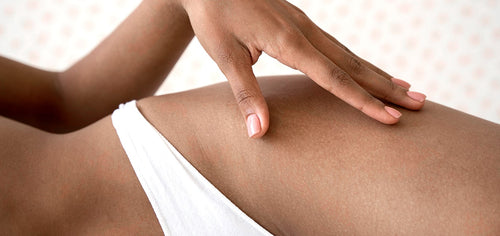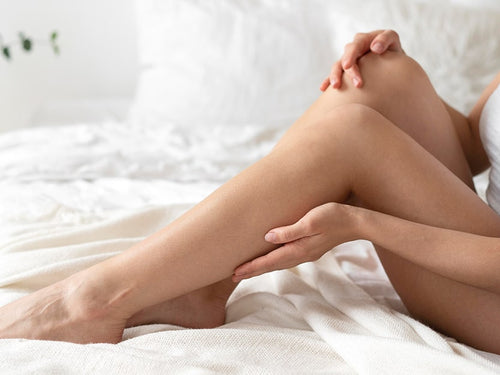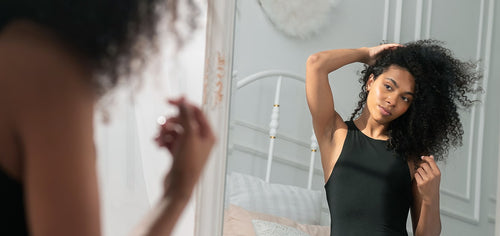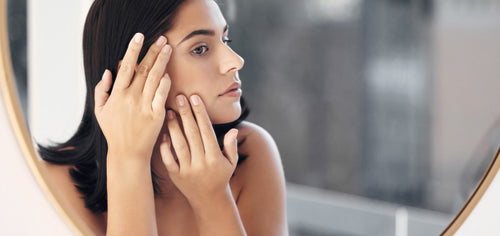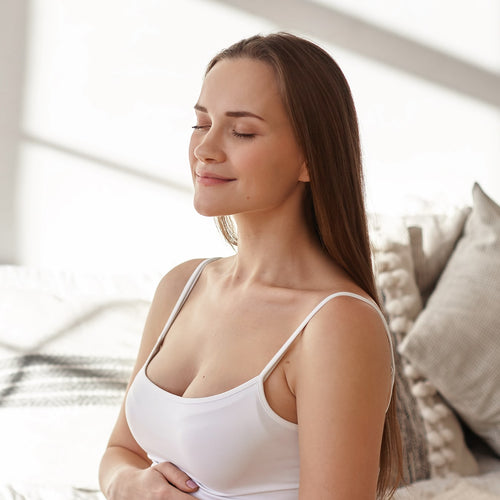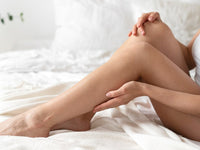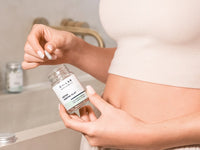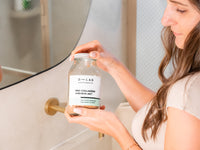
Introduction
Scars are an inevitable part of the skin healing process after an injury, surgery, or skin disease. However, they can sometimes remain red and visible longer than expected, which can be a source of discomfort and concern.
Why do some scars become red? What factors influence their appearance and how can these redness be effectively reduced?
In this article, we will explore the causes of scar redness, the healing phases, as well as the best strategies to prevent and treat them.
From sun protection to moisturizing care, including dietary supplements for beautiful skin, discover all the solutions to promote optimal healing and regain calm, even-toned skin.
Summary
I. Why does a scar turn red?
The causes of scar redness
Red scars are often the result of inflammation and a healing process. When a wound forms, the body triggers a series of mechanisms to repair the damaged tissues.
This inflammatory process leads to an increase in blood flow in the affected area, which causes redness.
Other factors can also contribute to this discoloration, including sun exposure, which can worsen the redness of the scar due to UV rays. Infections and allergic reactions can also cause persistent redness.
Several factors can explain this persistent red coloration:
Increased blood circulation: During healing, the body sends a surge of white blood cells and nutrients to the wound, resulting in a more pronounced red coloration.
Excessive collagen production: When the body produces excess collagen, the scar can become hypertrophic, meaning thicker and redder than normal.
Sun exposure: A young scar is particularly vulnerable to UV rays, which can stimulate pigmentation and intensify redness.
Inflammations and infections: An inflamed or infected scar may remain red longer and require medical treatment.
Skin type: Fair or sensitive skin tends to blush longer and react more intensely to external aggressions.
Aggravating factors
Some factors can worsen the appearance of red scars:
- Sun exposure: UV rays can intensify the redness of scars.
- Chronic inflammation: Prolonged inflammation can delay healing and maintain redness.
- Mechanical stress: Excessive tension on a scar can disrupt the healing process.
The healing phases and their impact on redness
Healing occurs in several distinct phases:
Inflammatory phase (0-3 days): During this initial period, the redness is intense due to the blood flow that comes to clean the wound and initiate repair.
Proliferation phase (4 days to 2 months): New cells form and collagen is produced abundantly. At this stage, the scar is still red and may appear swollen.
Maturation phase (2 months to 2 years): The structure of the scar firms up, the redness gradually fades, and the tissues become more resistant.
It is crucial to understand these phases to better manage and prevent scar redness.
Red scar at different stages
After 2 months: It is normal for a scar to retain a reddish tint at this stage, but it is important to protect it from the sun and apply appropriate care.
After 3 months: Redness begins to fade, although some scars remain visible longer depending on skin type and wound depth.
Post-operative scar: A surgical intervention often leaves a more pronounced scar that requires specific care to promote proper healing and minimize prolonged redness.
Swollen and red scar: A swollen scar may indicate a hypertrophic or keloid scarring process. These scars require special attention and sometimes specific treatments, such as silicone-based creams or corticosteroid injections.
II. How to reduce the redness of scars?
Protection and hydration of the skin
Hydration is essential to maintain healthy skin and prevent redness of scars.
The use of moisturizers rich in hyaluronic acid can help maintain hydration and soothe the skin. It is also crucial to protect the scar from the sun by using broad-spectrum sunscreens.
To learn more, see the benefits of hyaluronic acid.
Here are some key tips:
Hydration: Use creams enriched with hyaluronic acid and collagen to maintain skin elasticity and soothe redness.
Sun protection: Apply an SPF 50+ sunscreen to prevent the scar from becoming darker or more visible.
Avoid irritants: Some cosmetic products or perfumes can worsen inflammation and prolong redness.
Massage techniques and natural treatments
Massaging scars can promote better blood circulation and reduce redness. Applying gentle pressure and using soothing essential oils, such as rosehip oil, can improve the appearance of scars.
Different factors can help you:
Gentle and regular massages: Promote blood circulation and the reorganization of collagen fibers, allowing for a more flexible and less red scar.
Vegetable oils: Rosehip oil and Rosa Centifolia extract are known for their regenerating and soothing properties.
Medicinal plants: Wild pansy and stinging nettle help reduce inflammation and purify the skin.
Effective topical products
Topical products containing natural ingredients can be effective in reducing redness. For example, Rosa Centifolia is known for its moisturizing and soothing properties.
Other ingredients like stinging nettle leaf extract and wild pansy can also help reduce redness and inflammation.
Anti-redness cream: Contains anti-inflammatory agents such as aloe vera or allantoin to soothe the skin.
Vitamin C and zinc enriched serums: Stimulate healing and strengthen the skin against external aggressions.
What are the effective natural ingredients to reduce redness?
Effective natural ingredients to reduce redness include:
- La Rosa Centifolia for its moisturizing and soothing properties
- The extract of stinging nettle leaf for its sebum-regulating effect
- Wild thought for its purifying properties
Elimination of redness from a scar
To eliminate redness from a scar, it is recommended to use soothing topical products and to follow regular massage techniques. Dietary supplements can also play a crucial role in supporting skin regeneration from within.
Elimination of redness from a pimple
Redness around a pimple can be reduced by using products containing anti-inflammatory ingredients such as zinc and salicylic acid. Applying a cold compress can also reduce inflammation and redness.
III. The role of dietary supplements in reducing redness
Essential nutrients for regenerated skin
Some nutrients are essential to optimize healing and reduce persistent redness:
Collagen and hyaluronic acid: Ensure better skin elasticity and promote tissue regeneration.
Vitamin C and zinc: Strengthen the immune system and improve healing.
Omega 3-6-9: Help reduce inflammation and improve the overall condition of the skin.
The benefits of collagen and hyaluronic acid
Collagen and hyaluronic acid are essential components for skin health. Collagen helps maintain the skin's elasticity and firmness, while hyaluronic acid promotes hydration.
A collagen treatment for scars can be particularly beneficial for reducing redness and improving the appearance of scars.
Specific dietary supplements for the skin
Specific dietary supplements for the skin, such as the healing dietary supplement, are formulated to target the specific needs of the skin.
They contain anti-inflammatory and soothing ingredients that can help reduce redness and improve healing.
D-LAB NUTRICOSMETICS Perfect Skin Program
The "Perfect Skin" program by D-LAB is designed to act 360° on the imbalances of problematic skin.
It regulates sebum, accelerates healing, and eliminates imperfections in the long term by balancing the microbiota.
Targeted action on skin regeneration: Thanks to its 29 active ingredients, it promotes accelerated healing and reduces redness.
Sebum regulation and soothing of irritations: A complete solution to regain healthy and even skin.
The active ingredients:
The "Perfect Skin" program combines 29 innovative ingredients, including artichoke, microencapsulated zinc, probiotics, wild pansy, and Rosa Centifolia. These ingredients work synergistically to purify, smooth, and actively regenerate the skin tissues.
The benefits for the skin:
The benefits for the skin include a reduction in blemishes, an improvement in skin texture, and prevention of acne scars. The formula also helps to reduce redness and soothe the skin.
Hypertrophic scars: how can dietary supplements help?
Hypertrophic scars are thick and red scars that may benefit from taking dietary supplements.
Ingredients like collagen, hyaluronic acid, and antioxidants can promote better tissue regeneration and reduce the appearance of hypertrophic scars.
How can dietary supplements help reduce redness?
Dietary supplements can help reduce redness by providing essential nutrients that support the healing process. Ingredients such as zinc, vitamin C, and omega 3-6-9 are particularly effective in reducing inflammation and soothing the skin.
Moreover, the soothing collagen for the skin can be an ideal solution for those looking to reduce redness.
IV. Nutrition and healing: the importance of an appropriate diet
Foods beneficial for healing
A balanced diet is essential for optimal healing. Consuming foods rich in proteins, vitamins, and minerals can support the tissue repair process and prevent redness.
Fruits and vegetables rich in antioxidants: Help neutralize free radicals responsible for skin aging.
Fatty fish and nuts: Provide essential fatty acids for tissue repair.
Examples of beneficial diets
Adopting a diet rich in fruits, vegetables, and lean proteins can support healing. Foods rich in omega 3-6-9, such as fatty fish and nuts, can also help reduce inflammation and improve the appearance of scars.
What is the role of nutrition in the prevention of redness?
Nutrition plays a crucial role in preventing redness by providing the necessary nutrients to maintain skin health. A balanced diet and the use of dietary supplements can help prevent inflammation and promote healthy healing.
What is the relationship between diet and skin healing?
Nutrition and skin healing are closely linked. Essential nutrients, such as proteins, vitamins, and minerals, are necessary to repair damaged tissues and support optimal healing. A balanced diet and the use of dietary supplements can promote healthy skin and reduce scar redness.
Antioxidants and their role
Antioxidants play a key role in protecting the skin against damage caused by free radicals. They can help reduce inflammation and promote healthy healing. Dietary supplements rich in antioxidants, such as vitamin C, are particularly beneficial.
V. Conclusion and recommendations
Redness of scars is a normal phenomenon, but it can be reduced with targeted care and a suitable diet.
The integration of reparative creams, massages, sun protection, and dietary supplements is the key to achieving optimal healing.
Adopting a skincare routine with high-quality products, such as those from D-LAB, significantly improves the appearance of red scars and helps restore healthy, radiant skin.
Discover the rest of the skin range
Frequently Asked Questions
Why does a scar turn red?
A scar becomes red due to inflammation and increased blood flow in the wound area. This process is a normal part of healing, allowing the repair of damaged tissues.
How to reduce the redness of a mark on the skin?
To reduce the redness of a scar, it is recommended to use moisturizing creams, protect the scar from the sun, and apply massage techniques. Specific dietary supplements can also help reduce inflammation and improve healing.
How to make the redness of a mark on the skin disappear?
To reduce the redness of a scar, it is recommended to follow a skincare routine including moisturizing creams, massage techniques, and specific dietary supplements. Protecting the scar from the sun is also essential to prevent worsening of the redness.
What dietary supplements are recommended for healing?
The dietary supplements recommended for healing include collagen, hyaluronic acid, vitamin C, and omega 3-6-9. These ingredients support tissue regeneration and help reduce redness and inflammation.
What is the role of nutrition in healing?
Nutrition plays a crucial role in healing by providing the essential nutrients to repair damaged tissues. A balanced diet rich in proteins, vitamins, and minerals is essential for optimal healing.
How to incorporate dietary supplements into a skincare routine?
To incorporate dietary supplements into a skincare routine, it is recommended to follow the indicated dosages and combine them with appropriate topical treatments. Regular intake of dietary supplements, such as those from D-LAB NUTRICOSMETICS, can maximize the benefits for the skin.
What is the importance of high-quality products in the treatment of redness?
Using high-quality products, such as those from D-LAB NUTRICOSMETICS, is essential to achieve optimal results in treating redness. The premium ingredients and specific formulations ensure maximum effectiveness and respect the health of the skin.
Understanding the causes of inflammation and poor healing
Inflammation and poor healing can be caused by various factors, including infections, immune disorders, or nutritional deficiencies. It is crucial to adopt a holistic approach to treat these issues, combining topical care and dietary supplements.
Is it normal for a scar to be red?
Yes, it is normal for a scar to be red during the initial phases of healing. This redness indicates good blood circulation and an active healing process. However, if the redness persists for too long, it may be necessary to consult a specialist.
The healing process: why do some scars remain red?
Some scars remain red due to prolonged inflammation or an abnormal healing process. Hypertrophic and keloid scars are typical examples of scars that remain red and require special attention.
How can redness be reduced with natural products?
Natural products, such as rosehip oil, wild pansy extract, and Rosa Centifolia, are known for their soothing and anti-inflammatory properties. The use of these ingredients in topical treatments can help reduce the redness of scars.
How to prevent redness after an injury?
Prevention of redness after an injury involves careful cleaning of the wound, application of soothing products, and protection of the area from UV rays. Following a balanced diet and incorporating specific dietary supplements can also support the healing process.
Redness after chickenpox
Chickenpox scars can remain red for several months. Using soothing products like the Soothing Skin Complex and specific dietary supplements can help reduce redness and improve the appearance of the skin.
Thyroid scar
Thyroidectomy scars can be red and visible due to their location on the neck. Massage techniques and the use of topical products can promote better healing and reduce redness.
Redness around the wound
Redness around a wound may indicate an infection or prolonged inflammation. It is important to monitor these signs and consult a healthcare professional if necessary.
Bibliography
Recognized scientific sources
- Anderson, J. J., & Rondinelli, D. (2018). "Collagen and skin health: evidence from clinical studies." Journal of Cosmetic Dermatology.
- Smith, R. E., & Meyer, T. (2019). "The role of hyaluronic acid in skin hydration and inflammation." Research and Practice in Dermatology.
- Jones, A. M., & Williams, K. (2020). "Antioxidants and their impact on skin healing and inflammation." Clinical Nutritional Science.
- Brown, G. R., & Taylor, S. (2021). "Micronutrients in wound healing: zinc, vitamin C, and omega fatty acids." Advances in Wound Care.
- Lee, Y. H., & Kim, S. H. (2022). "The effects of probiotics on skin health and acne management." Journal of Dermatological Treatment.



